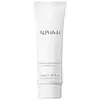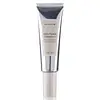What's inside
What's inside
 Key Ingredients
Key Ingredients

 Benefits
Benefits

 Concerns
Concerns

 Ingredients Side-by-side
Ingredients Side-by-side

Water
Skin ConditioningDimethicone
EmollientPropylene Glycol
HumectantGlycerin
HumectantHydrolyzed Corallina Officinalis Extract
Skin ConditioningSimmondsia Chinensis Seed Oil
EmollientMacadamia Ternifolia Seed Oil
EmollientOenothera Biennis Oil
EmollientGlyceryl Stearate
EmollientCetearyl Alcohol
EmollientEthylhexyl Palmitate
EmollientCaprylic/Capric Triglyceride
MaskingCarbomer
Emulsion StabilisingPhenoxyethanol
PreservativePotassium Hydroxide
BufferingTocopheryl Acetate
AntioxidantPanthenol
Skin ConditioningSymphytum Officinale Leaf Extract
Skin ConditioningPanax Ginseng Root Extract
EmollientIsomerized Linoleic Acid
Skin ConditioningAluminum/Magnesium Hydroxide Stearate
Emulsion StabilisingCaprylyl Glycol
EmollientTriticum Aestivum Germ Oil
EmollientPelargonium Graveolens Oil
MaskingTriolein
Skin ConditioningPalmitoyl Tripeptide-5
Skin ConditioningPalmitic Acid
EmollientPolygonatum Officinale Rhizome/Root Extract
Skin ConditioningArnica Montana Flower Extract
MaskingHordeum Vulgare Root Extract
EmollientCupressus Sempervirens Seed Extract
PerfumingPropyl Gallate
AntioxidantCitric Acid
BufferingAscorbyl Palmitate
AntioxidantTocopherol
AntioxidantBeta-Sitosterol
Emulsion StabilisingCitral
PerfumingCitronellol
PerfumingGeraniol
PerfumingLinalool
PerfumingWater, Dimethicone, Propylene Glycol, Glycerin, Hydrolyzed Corallina Officinalis Extract, Simmondsia Chinensis Seed Oil, Macadamia Ternifolia Seed Oil, Oenothera Biennis Oil, Glyceryl Stearate, Cetearyl Alcohol, Ethylhexyl Palmitate, Caprylic/Capric Triglyceride, Carbomer, Phenoxyethanol, Potassium Hydroxide, Tocopheryl Acetate, Panthenol, Symphytum Officinale Leaf Extract, Panax Ginseng Root Extract, Isomerized Linoleic Acid, Aluminum/Magnesium Hydroxide Stearate, Caprylyl Glycol, Triticum Aestivum Germ Oil, Pelargonium Graveolens Oil, Triolein, Palmitoyl Tripeptide-5, Palmitic Acid, Polygonatum Officinale Rhizome/Root Extract, Arnica Montana Flower Extract, Hordeum Vulgare Root Extract, Cupressus Sempervirens Seed Extract, Propyl Gallate, Citric Acid, Ascorbyl Palmitate, Tocopherol, Beta-Sitosterol, Citral, Citronellol, Geraniol, Linalool
Water
Skin ConditioningGlycerin
HumectantDimethicone
EmollientSimmondsia Chinensis Seed Oil
EmollientSqualane
EmollientGlyceryl Stearate
EmollientCetyl Alcohol
EmollientNiacinamide
SmoothingStearyl Alcohol
EmollientPalmitoyl Tripeptide-5
Skin ConditioningPantolactone
HumectantPalmitoyl Tripeptide-1
Skin ConditioningPalmitoyl Tetrapeptide-7
Skin ConditioningHydrolyzed Plukenetia Volubilis Seed Extract
Emulsion StabilisingDunaliella Salina Extract
Skin ConditioningSodium Hyaluronate
Humectant3-O-Ethyl Ascorbic Acid
Skin ConditioningPanthenol
Skin ConditioningCaryodendron Orinocense Seed Oil
EmollientHonokiol
AntioxidantMagnolol
AntioxidantPalmitic Acid
EmollientSorbitan Oleate
EmulsifyingAluminum Starch Octenylsuccinate
AbsorbentHydroxyacetophenone
AntioxidantStearic Acid
CleansingAcrylamide/Sodium Acryloyldimethyltaurate Copolymer
Emulsion StabilisingPolyglyceryl-6 Laurate
Emulsifying1,2-Hexanediol
Skin ConditioningBoron Nitride
AbsorbentCaprylyl Glycol
EmollientPolyglyceryl-10 Oleate
Skin ConditioningIsohexadecane
EmollientButylene Glycol
HumectantChlorphenesin
AntimicrobialAcrylates/C10-30 Alkyl Acrylate Crosspolymer
Emulsion StabilisingTocopheryl Acetate
AntioxidantPolysorbate 80
EmulsifyingSorbitan Palmitate
EmulsifyingSodium Hydroxide
BufferingSodium Benzoate
MaskingCarbomer
Emulsion StabilisingSodium Lactate
BufferingPhenoxyethanol
PreservativePolysorbate 20
EmulsifyingCitric Acid
BufferingEthylhexylglycerin
Skin ConditioningPotassium Sorbate
PreservativeWater, Glycerin, Dimethicone, Simmondsia Chinensis Seed Oil, Squalane, Glyceryl Stearate, Cetyl Alcohol, Niacinamide, Stearyl Alcohol, Palmitoyl Tripeptide-5, Pantolactone, Palmitoyl Tripeptide-1, Palmitoyl Tetrapeptide-7, Hydrolyzed Plukenetia Volubilis Seed Extract, Dunaliella Salina Extract, Sodium Hyaluronate, 3-O-Ethyl Ascorbic Acid, Panthenol, Caryodendron Orinocense Seed Oil, Honokiol, Magnolol, Palmitic Acid, Sorbitan Oleate, Aluminum Starch Octenylsuccinate, Hydroxyacetophenone, Stearic Acid, Acrylamide/Sodium Acryloyldimethyltaurate Copolymer, Polyglyceryl-6 Laurate, 1,2-Hexanediol, Boron Nitride, Caprylyl Glycol, Polyglyceryl-10 Oleate, Isohexadecane, Butylene Glycol, Chlorphenesin, Acrylates/C10-30 Alkyl Acrylate Crosspolymer, Tocopheryl Acetate, Polysorbate 80, Sorbitan Palmitate, Sodium Hydroxide, Sodium Benzoate, Carbomer, Sodium Lactate, Phenoxyethanol, Polysorbate 20, Citric Acid, Ethylhexylglycerin, Potassium Sorbate
 Reviews
Reviews

Ingredients Explained
These ingredients are found in both products.
Ingredients higher up in an ingredient list are typically present in a larger amount.
Caprylyl Glycol is a humectant and emollient, meaning it attracts and preserves moisture.
It is a common ingredient in many products, especially those designed to hydrate skin. The primary benefits are retaining moisture, skin softening, and promoting a healthy skin barrier.
Though Caprylyl Glycol is an alcohol derived from fatty acids, it is not the kind that can dry out skin.
This ingredient is also used as a preservative to extend the life of products. It has slight antimicrobial properties.
Learn more about Caprylyl GlycolCarbomer is a polymer of acrylic acid. Its main role is to create a gel consistency.
A high amount of carbomer can cause pilling or balling up of products. Don't worry, most products contain 1% or less of carbomer.
Citric Acid is an alpha hydroxy acid (AHA) naturally found in citrus fruits like oranges, lemons, and limes.
Like other AHAs, citric acid can exfoliate skin by breaking down the bonds that hold dead skin cells together. This helps reveal smoother and brighter skin underneath.
However, this exfoliating effect only happens at high concentrations (20%) which can be hard to find in cosmetic products.
Due to this, citric acid is usually included in small amounts as a pH adjuster. This helps keep products slightly more acidic and compatible with skin's natural pH.
In skincare formulas, citric acid can:
While it can provide some skin benefits, research shows lactic acid and glycolic acid are generally more effective and less irritating exfoliants.
Most citric acid used in skincare today is made by fermenting sugars (usually from molasses). This synthetic version is identical to the natural citrus form but easier to stabilize and use in formulations.
Read more about some other popular AHA's here:
Learn more about Citric AcidDimethicone is a type of synthetic silicone created from natural materials such as quartz.
What it does:
Dimethicone comes in different viscosities:
Depending on the viscosity, dimethicone has different properties.
Ingredients lists don't always show which type is used, so we recommend reaching out to the brand if you have questions about the viscosity.
This ingredient is unlikely to cause irritation because it does not get absorbed into skin. However, people with silicone allergies should be careful about using this ingredient.
Note: Dimethicone may contribute to pilling. This is because it is not oil or water soluble, so pilling may occur when layered with products. When mixed with heavy oils in a formula, the outcome is also quite greasy.
Learn more about DimethiconeGlycerin is already naturally found in your skin. It helps moisturize and protect your skin.
A study from 2016 found glycerin to be more effective as a humectant than AHAs and hyaluronic acid.
As a humectant, it helps the skin stay hydrated by pulling moisture to your skin. The low molecular weight of glycerin allows it to pull moisture into the deeper layers of your skin.
Hydrated skin improves your skin barrier; Your skin barrier helps protect against irritants and bacteria.
Glycerin has also been found to have antimicrobial and antiviral properties. Due to these properties, glycerin is often used in wound and burn treatments.
In cosmetics, glycerin is usually derived from plants such as soybean or palm. However, it can also be sourced from animals, such as tallow or animal fat.
This ingredient is organic, colorless, odorless, and non-toxic.
Glycerin is the name for this ingredient in American English. British English uses Glycerol/Glycerine.
Learn more about GlycerinGlyceryl Stearate is a mix of glycerin and stearic acid.
It is used to stabilize the mixing of water and oil ingredients. By preventing these ingredients from separating, it can help elongate shelf life. It can also help thicken the product's texture.
As an emollient, it helps soften skin and supports barrier-replenishing ingredients.
In cosmetics, Glyceryl Stearate is often made from vegetable oils or synthetically produced.
This ingredient may not be fungal-acne safe
Fun fact: The human body also creates Glyceryl Stearate naturally.
Learn more about Glyceryl StearatePalmitic Acid is a fatty acid naturally found in our skin and in many plant and animal sources. In cosmetics, it is usually derived from palm oil. It serves many purposes in skincare, acting as a cleanser, emollient, and emulsifier.
As an emollient, palmitic acid helps soften and smooth the skin by preventing water loss. In cleansers, it helps remove oil and dirt while creating foam.
Its emulsifying properties help stabilize products by keeping water and oil-based ingredients from separating.
This may not be suitable for fungal acne-prone skin, as fatty acids like this can sometimes trigger breakouts in sensitive individuals.
Learn more about Palmitic AcidThis synthetic peptide is created from lysine, valine, and palmitic acid.
According to the manufacturer, in-vitro studies show tissue growth and collagen synthesis. Another in-vivo study found 60 volunteers saw a significant reduction in wrinkles after 84 days.
Due to its palmitic acid base, this peptide may not be fungal-acne safe.
Learn more about Palmitoyl Tripeptide-5Panthenol is a common ingredient that helps hydrate and soothe the skin. It is found naturally in our skin and hair.
There are two forms of panthenol: D and L.
D-panthenol is also known as dexpanthenol. Most cosmetics use dexpanthenol or a mixture of D and L-panthenol.
Panthenol is famous due to its ability to go deeper into the skin's layers. Using this ingredient has numerous pros (and no cons):
Like hyaluronic acid, panthenol is a humectant. Humectants are able to bind and hold large amounts of water to keep skin hydrated.
This ingredient works well for wound healing. It works by increasing tissue in the wound and helps close open wounds.
Once oxidized, panthenol converts to pantothenic acid. Panthothenic acid is found in all living cells.
This ingredient is also referred to as pro-vitamin B5.
Learn more about PanthenolPhenoxyethanol is a preservative that has germicide, antimicrobial, and aromatic properties. Studies show that phenoxyethanol can prevent microbial growth. By itself, it has a scent that is similar to that of a rose.
It's often used in formulations along with Caprylyl Glycol to preserve the shelf life of products.
This oil comes from the seeds of the desert shrub called Jojoba. It is more commonly known as jojoba oil, a non-comedogenic oil.
Jojoba oil does not contain fragrance and has many fatty-acids, making it a great soothing ingredient.
It also contains Vitamin E, a great moisturizing ingredient. Vitamin E is also an antioxidant and protects your skin against oxidative damage.
This ingredient humectant properties, meaning it helps draw moisture from the air. This helps keep your skin hydrated.
While jojoba has antibacterial properties, it is only able to kill some strains of bacteria.
Studies also show it helps in wound healing. In fact, Indigenous cultures have used jojoba as a moisturizer and to help treat burns for centuries.
Fun fact: Jojoba oil similar to natural human skin sebum, so it has a great effect on dry skin. It is also promising with helping to regulate sebum production.
Due to its fatty acid content, Jojoba oil may not be fungal acne safe. We recommend speaking with a professional if you have any concerns.
Learn more about Simmondsia Chinensis Seed OilTocopheryl Acetate is AKA Vitamin E. It is an antioxidant and protects your skin from free radicals. Free radicals damage the skin by breaking down collagen.
One study found using Tocopheryl Acetate with Vitamin C decreased the number of sunburned cells.
Tocopheryl Acetate is commonly found in both skincare and dietary supplements.
Learn more about Tocopheryl AcetateWater. It's the most common cosmetic ingredient of all. You'll usually see it at the top of ingredient lists, meaning that it makes up the largest part of the product.
So why is it so popular? Water most often acts as a solvent - this means that it helps dissolve other ingredients into the formulation.
You'll also recognize water as that liquid we all need to stay alive. If you see this, drink a glass of water. Stay hydrated!
Learn more about Water